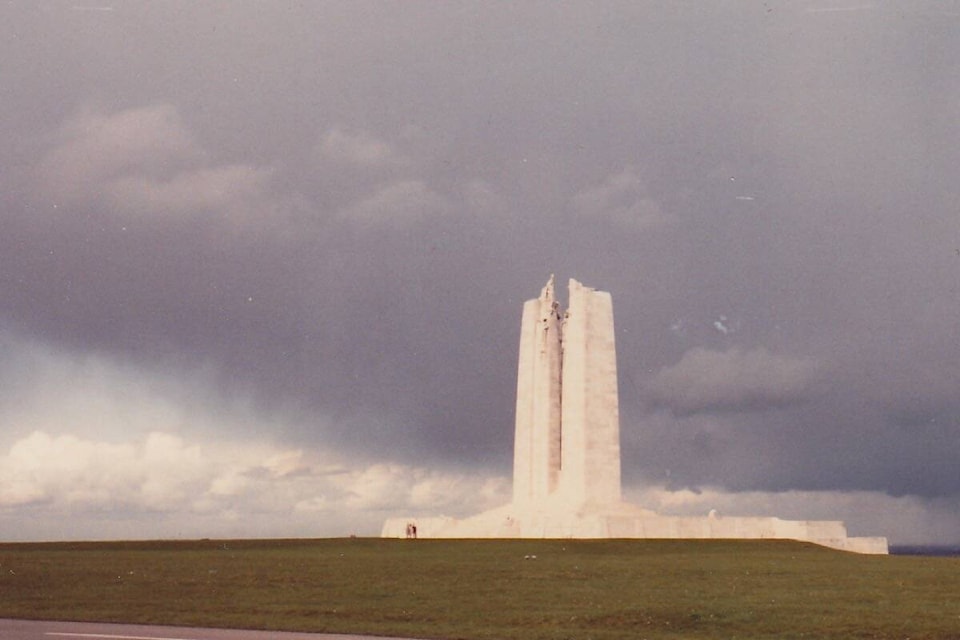It is an odd feeling, to know that you are in a small part of Canada while standing several thousand miles and an ocean away, but that is what happens when you visit the Vimy Monument in northern France. In 1922 the French government granted “freely, and for all time, to the Government of Canada the free use of the land exempt from all taxes”. The land in question is the site of the memorial, as well as 100 hectares surrounding it on the ridge, which overlooks the Douai Plain, and was of strategic importance during World War I: successive allied campaigns failed to capture it until Canadian troops were victorious at Easter 1917.
I visited the site on a grey March day in 1983 that was full of rain but not quite raining. The air was heavy with moisture, as if one good poke at the sky would rip a hole that would set off a deluge. Apart from the magnificent memorial, there was nothing immediately apparent to mark the site as anything special, although a closer inspection showed the area skirting the monument pockmarked with gentle depressions. Carpeted in soft green grass, they were the remnants of shells which had torn apart the landscape during the war, creating raw, jagged craters in the soil.
The visit to Vimy was part of a high school trip to Britain, France, and the Netherlands. At 19 I was no longer a high school student, having graduated two years earlier, but I had been on a similar trip during my grade 12 year, and had been allowed back as a kind of quasi-chaperone. The age difference between me and the students was slight in years, but became apparent when we arrived at Vimy for a brief stop. Most of the others took one look out the coach window and decided not to bother even getting out, but I immediately headed to the monument, which has the names of the nearly 12,000 Canadian soldiers who died during the First World War but had (at the time the monument was built) no known graves.
My own brother was a couple of months shy of 17 at the time; the same age as many of those whose names were carved on the monument. I remember, very vividly, thinking “This could have been him.” I was the sister of a brother then; I am the mother of a son now, who is 24 and the same age as others whose names are recorded at Vimy, which makes me even more aware of what so many mothers suffered for so long during those dark years, waiting with sickening dread for the telegram no one wanted to receive.
I do not subscribe to Horace’s belief of “Dulce et decorum est, pro patria mori” (“It is sweet and proper to die for one’s country”). British poet Wilfred Owen — who was killed in action on Nov. 4, 1918 — mocked Horace’s dictum in his gut-wrenching poem “Dulce et Decorum Est”, where the Roman’s words serve as a bitter renunciation of the supposed glory of war. Whatever you believe about the rightness of their cause, it would seem impossible not to be moved by the monument at Vimy, watched over by the figure of a woman, her head bowed in sorrow.
We did not have very long at Vimy Ridge, but to this day I feel sorry for the students who did not even get off the bus, and thus wasted an opportunity that many would give a good deal for. As I prepared to head back to the coach, the sky cleared, just a little, and the faintest hint of a rainbow appeared in the distance. It made me think of another poem, “In Flanders Fields”, by Canadian John McCrae, and its lines “Short days ago we lived, felt dawn, saw sunset glow.”
Did any of my fellow students see that rainbow? Did my compatriots see one there, more than a century ago? I would like to think they did; a small sign of grace amid the horrors of war, and a small thanks for their sacrifice.
editorial@accjournal.ca
Like us on Facebook and follow us on Twitter
